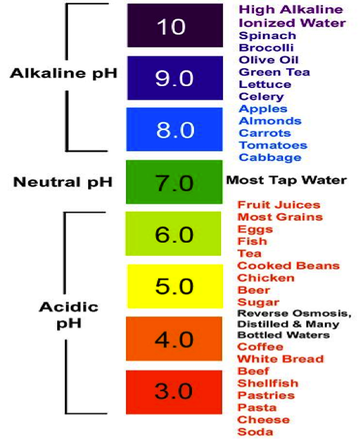

Sometimes, the pH value can be less than 0 for very strong acids or greater than 14 for very strong bases.\[\require\) value less than \(1\) as ionization (forward reaction) is not favoured. pH 7 is said to be neutral – this means there is a balance of H + and OH - ions. The more H + ions, the more acidic it is and the lower the pH will be. They are usually highly corrosive, so they must be handled with care. This means that a decrease in the pH scale of 1 can result in an increase of 10 times the concentration of hydrogen ions.Īcids have a pH below 7. Pure acids and bases and their concentrated aqueous solutions are commonly encountered in the laboratory. It is important to know that this scale is logarithmic. Examples of acids are Hydrochloric acid H C l, Sulfuric. When reacted with metals, acid substances produce hydrogen gas. This is a pH scale, and it can be used to compare substances. Properties of Acids and Bases Acids are good conductors of electricity. When we test a substance with a pH meter, we get a number from 0–14. Identifying and measuring acids and basesĪ pH meter measures how acidic or basic a solution is. The acid created from the bacteria on your teeth reacts with the base in your toothpaste. An example you might be familiar with is brushing your teeth. We call a base that has been added to water an alkaline solution. When bases are added to water, they split to form hydroxide ions, written as OH. A base is a substance that neutralises acids.

If an acid and a base are added together, they react to form water (H 2O) and a salt. Acids and bases can be found all throughout your everyday life and are often times very useful even in your own body But what is it about acids that make s. The chemical difference between acids and bases is that acids produce hydrogen ions and bases accept hydrogen ions. Ca(OH) 2 – calcium hydroxide (builders’ lime).

If we look at some formulas for bases, we can see that they all contain hydroxide (OH -) ions – for example: The chemical difference between acids and bases is that acids produce hydrogen ions and bases accept hydrogen ions.Ī base is a substance that neutralises acids. For example hydrochloric acid (HCl) dissociates into hydrogen ions (H +) and chloride anions (Cl -).
#ACIDS AND BASEX HOW TO#
It explains how to write acid base reactions as well as h. The science term for this is that it dissociates. This video provides a basic introduction into acids and bases with reference to organic chemistry. When we put a molecule of acid into water, it breaks apart. If we look at the formulas of different acids, we can see that they all contain at least one H (hydrogen) – for example: There are three strong acids that we commonly find: HCl (hydrochloric acid), HNO3 (nitric acid) and H2SO4 (sulfuric acid). Examples of bases include ammonia (NH 3 ), sodium hydroxide (NaOH), potassium hydroxide (KOH), and calcium hydroxide (Ca. A base is a chemical that (1) can accept a hydrogen ion, or (2) can donate an electron pair to form a covalent bond with a Lewis acid. A hydrogen ion is just the proton and no electron. Examples of commonly used acids are hydrochloric acid (HCl) and sulfuric acid (H 2 SO 4 ). The simple chemistryĪn acid is a substance that produces hydrogen (H +) ions when it is added to water. Basic substances are used in many cleaning products. They are used in the manufacturing of everyday items such as carbonated soft drinks, salad dressing, kitchen and bathroom cleaners, and fertilizers. A strong base can cause severe chemical burns because it starts to damage the proteins in your skin. Acids and bases are essential components of the natural world that play key roles in medicine and industry.

This is because they can change the structure of proteins. BasesĪ corrosive substance is one that will damage or destroy other substances with which it comes into contact by means of a chemical reaction.īases feel slippery to touch. Learn about the reactions of calcium carbonate (like limestone) in this article. They also react with a group of substances called carbonates to produce carbon dioxide gas, salt and water. Acids react with most metals including magnesium to create hydrogen gas and a salt – there are lots of different types of salts in chemistry.


 0 kommentar(er)
0 kommentar(er)
